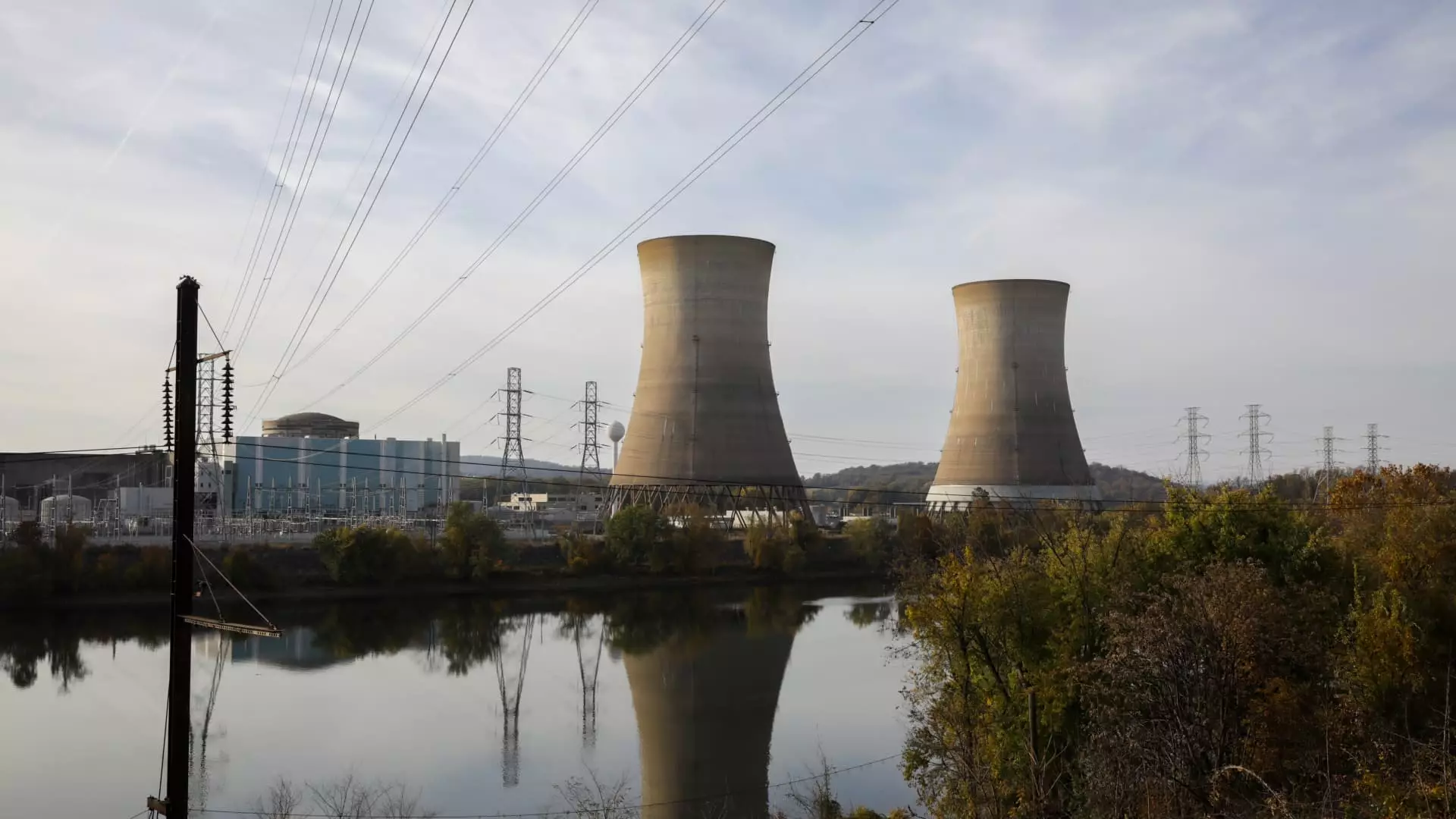In recent weeks, the introduction of China’s DeepSeek, an open-source artificial intelligence (AI) research laboratory, has sent shockwaves across the technology and energy sectors. While initially seen as an emblem of rapid advancements in AI that could require substantial energy resources, its potential implications have triggered a significant re-evaluation of how much energy these innovations might consume. This has particularly impacted power companies heavily invested in servicing tech sector demands, leading to significant stock market reactions.
Following the news of DeepSeek’s inception, major players in the energy market—Constellation Energy, Vistra, GE Vernova, and Talen Energy—experienced drastic dips in their stock prices. Constellation and Vistra fell over 16%, while GE Vernova registered an 18% loss. This decline came as a direct response to investor reassessment, influenced by fears that the competitive landscape for AI in China could diminish expectations of energy requirement growth in the United States. Despite positioning themselves as leaders in providing energy solutions tailored to AI demand, these companies found themselves vulnerable to sudden shifts in market sentiment.
It is critical to recognize that these companies previously enjoyed a boost in their stock prices as investors held optimism about the AI data center boom generating unprecedented electricity demand. However, the emergence of DeepSeek and its competitive AI modeling capabilities led to doubts regarding the anticipated growth in energy consumption among American tech firms, causing energy companies to face harsh market corrections.
DeepSeek’s rapid advancement in AI modeling, notably with its release of the DeepSeek-R1 reasoning model, has further intensified the scrutiny faced by U.S.-based enterprises. Remarkably, industry experts voiced opinions suggesting that DeepSeek’s models are rivaling or even surpassing those of American tech giants. Alexandr Wang of Scale AI noted that DeepSeek’s capabilities could shift the paradigm of AI efficiency and spark a rethinking of U.S. leadership in this domain. Such claims raise critical questions about the broader implications of global competition in AI and what that means for energy consumption and sustainability.
Adding layers to this analysis is Microsoft’s description of DeepSeek as “super-compute efficient.” This terminology not only refers to the effective energy consumption of DeepSeek’s technology but indirectly conveys apprehension that the U.S. may not hold a monopoly over high-performance AI systems in the future. Such developments call into question traditional models of forecasting energy needs based solely on current trends in the tech sector.
With these competitive pressures looming, many energy companies are refocusing their strategies toward providing sustainable and dependable power sources. In particular, nuclear energy is gaining traction as a preferred solution due to its ability to deliver large amounts of reliable, carbon-free electricity. Agreements such as Constellation’s partnership with Microsoft to reignite the Three Mile Island nuclear plant exemplify this shift. Talen Energy’s provision of power to Amazon’s data centers from nearby nuclear facilities highlights a growing trend toward sustainable energy solutions.
However, the outlook is nuanced. While investments in nuclear energy and other sustainable technology may mitigate some risks, they do not alleviate all concerns. Bank of America analysts have pointed out that the U.S. and European grids remain significantly under-invested, presenting a critical bottleneck in meeting future electrical demands stemming from not only AI advancements but broader technological shifts.
As the energy sector grapples with the ramifications of sudden technological competition and fluctuating market expectations, the question remains: how will the intersection of AI and energy demand evolve? No longer can energy companies assume that growth in tech consumption will consistently translate into increased energy requirements without considering competitive global dynamics like those posed by China’s DeepSeek.
Power companies must increase their adaptability and innovation not only in energy production but also in understanding the shifting landscapes influenced by technological advancements. Addressing under-investment in grids and leveraging sustainable energy sources will be paramount in navigating this challenging new terrain. Ultimately, the energy sector stands at a crossroads where proactive strategies will determine whether it can continue meeting the demands of an increasingly tech-driven world.

